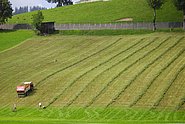The health of the planet and its people are at risk. The deterioration of the global commons—ie, the natural systems that support life on Earth—is exacerbating energy, food, and water insecurity, and increasing the risk of disease, disaster, displacement, and conflict. In this Commission, we quantify safe and just Earth-system boundaries (ESBs) and assess minimum access to natural resources required for human dignity and to enable escape from poverty. Collectively, these describe a safe and just corridor that is essential to ensuring sustainable and resilient human and planetary health and thriving in the Anthropocene. We then discuss the need for translation of ESBs across scales to inform science-based targets for action by key actors (and the challenges in doing so), and conclude by identifying the system transformations necessary to bring about a safe and just future.
Our concept of the safe and just corridor advances research on planetary boundaries and the justice and Earth-system aspects of the Sustainable Development Goals. We define safe as ensuring the biophysical stability of the Earth system, and our justice principles include minimising harm, meeting minimum access needs, and redistributing resources and responsibilities to enhance human health and wellbeing. The ceiling of the safe and just corridor is defined by the more stringent of the safe and just ESBs to minimise significant harm and ensure Earth-system stability. The base of the corridor is defined by the impacts of minimum global access to food, water, energy, and infrastructure for the global population, in the domains of the variables for which we defined the ESBs. Living within the corridor is necessary, because exceeding the ESBs and not meeting basic needs threatens human health and life on Earth. However, simply staying within the corridor does not guarantee justice because within the corridor resources can also be inequitably distributed, aggravating human health and causing environmental damage. Procedural and substantive justice are necessary to ensure that the space within the corridor is justly shared. [...]
See DOIVoir Institutional Repository DORA

